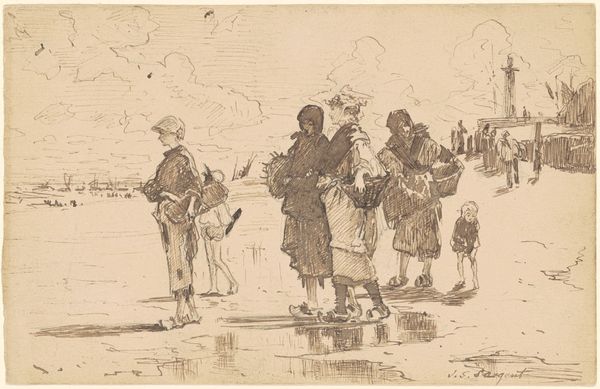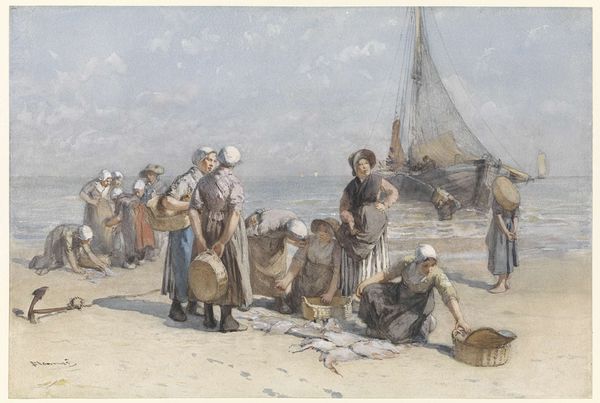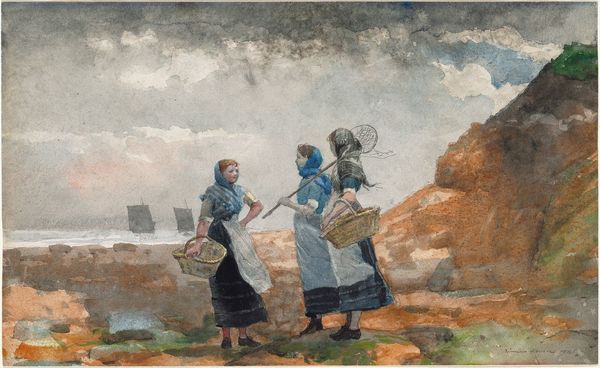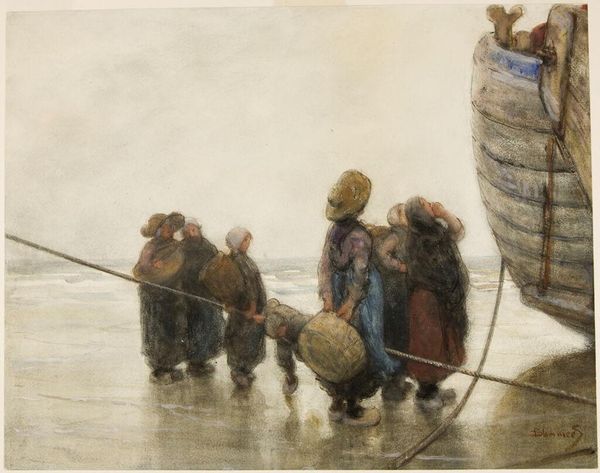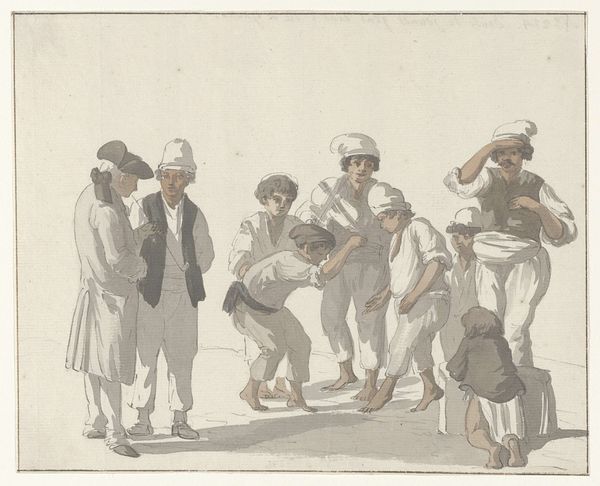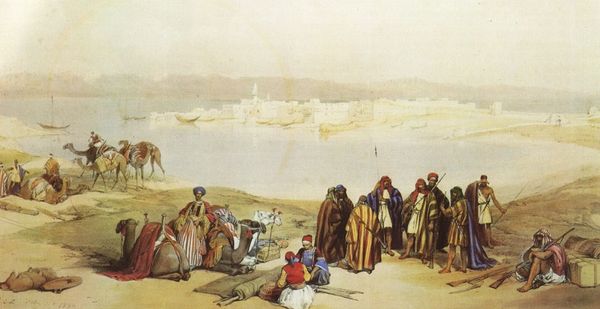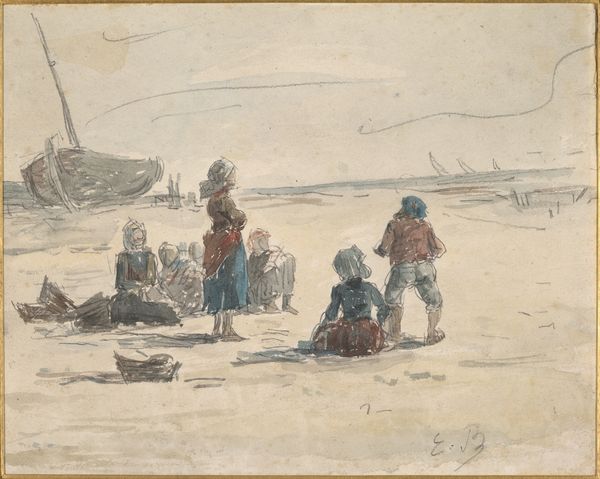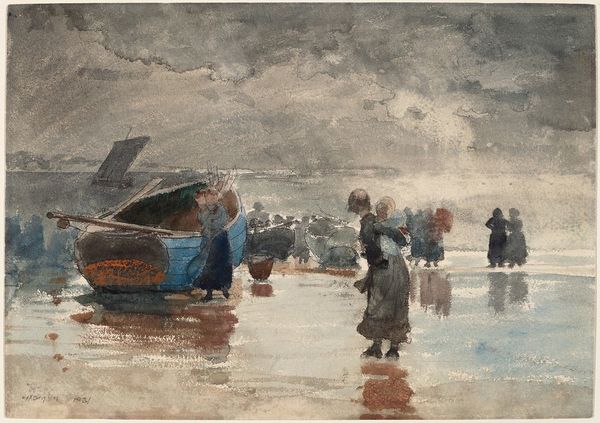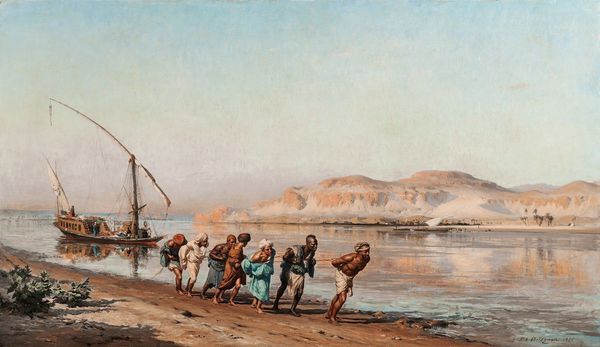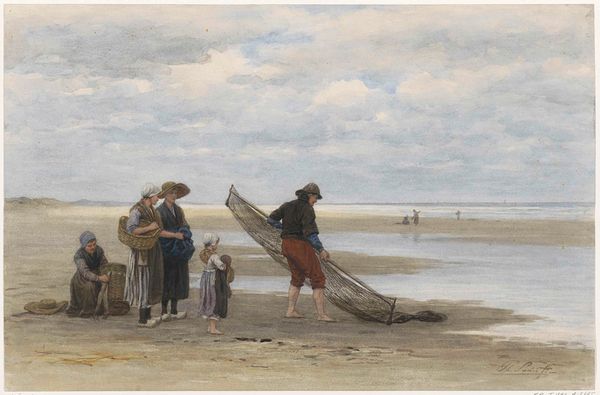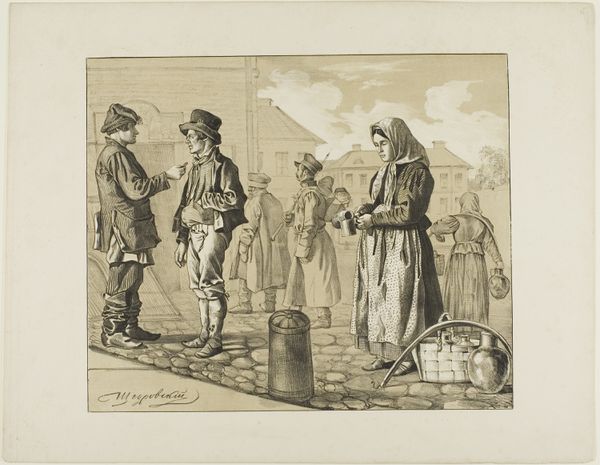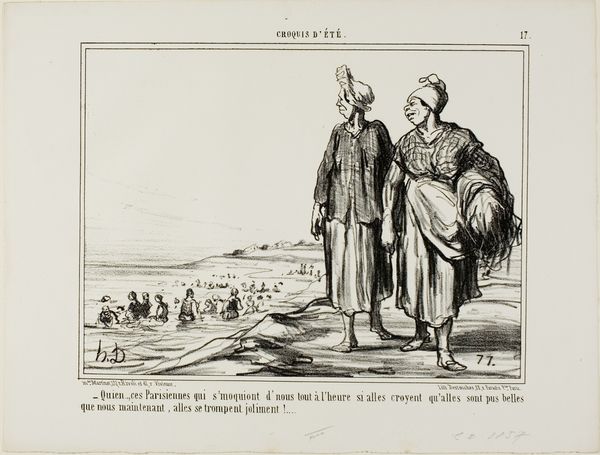
painting, watercolor
#
figurative
#
painting
#
impressionism
#
landscape
#
figuration
#
watercolor
#
coloured pencil
#
watercolour illustration
#
genre-painting
#
realism
Copyright: Public Domain: Artvee
Editor: We’re looking at Winslow Homer's "Four Fishwives on the Beach," painted in 1881. It's a watercolor, and something about the figures' purposeful stride and muted tones gives me a sense of resilient, everyday labor. What historical narratives are wrapped up in this piece? Curator: This watercolor reflects a growing interest in representing the lives of working-class women in the late 19th century, moving beyond idealized portrayals. How do you think the artist presents the 'fishwives' labor? Do we get a sense of romanticism or something else? Editor: Well, their burdens are pretty visible, carrying children or large baskets. But there’s a certain grace in how they move, a sense of community. Is Homer offering a critique or celebrating them? Curator: It’s complex. Homer certainly romanticizes aspects of rural life, particularly in contrast to the rapidly industrializing urban centers. But he also gives us glimpses into the harsh realities and responsibilities these women faced. It's important to remember that the late 19th century also saw a surge in social documentary projects and a fascination with "authentic" experiences, that helped shape both production and reception of works like these. How do you read that influence in Homer's choices here? Editor: That’s a good point, it feels staged to a degree. Like he’s showing a specific story about their role in society, even with that implied grit. It's like we are invited into this genre painting to consider these "types" of women in society, but not *those* specific people. Curator: Exactly! It's less about pure, unadulterated reality, and more about the artist engaging with prevailing social and cultural notions surrounding labor, gender, and the idyllic rural life. Editor: That makes sense. I see now how the painting isn't just a snapshot of life, but a conscious construction shaped by broader social ideas and artistic trends. It makes you think about the ethics of representation, too. Curator: Precisely, and that critical awareness enhances our appreciation of the work. It leaves me thinking about the art world today.
Comments
No comments
Be the first to comment and join the conversation on the ultimate creative platform.
